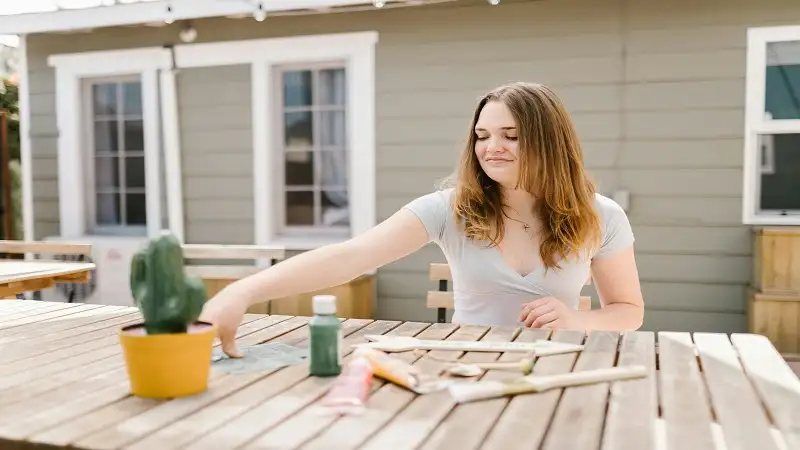Your outdoor space is more than just a yard—it’s an extension of your home, a reflection of your lifestyle, and a place to relax, entertain, and connect with nature. Transform Your Outdoor Space Design Inspiration Guide Whether you have a small garden, a spacious backyard, or a cozy patio, thoughtful landscape design can completely transform the way you experience your home.
Creating a functional and beautiful landscape is not just about planting flowers or adding a patio; it’s about designing a harmonious environment that suits your lifestyle, enhances your home’s curb appeal, and brings you joy year-round. In this comprehensive guide, we’ll walk you through every step of the process—from planning and design to plant selection and finishing touches—so you can confidently turn your outdoor vision into reality.
Step 1: Evaluate Your Space and Needs
Before you start sketching ideas or buying plants, take time to evaluate your outdoor space.
1.1 Observe Your Existing Landscape
Walk around your yard at different times of the day and take notes. Notice where the sun hits, where the shade falls, and which areas tend to stay damp or dry. Pay attention to slopes, drainage, and existing structures. Transform Your Outdoor Space Design Inspiration Guide Understanding these natural elements will help you make smarter design decisions.
1.2 Define the Purpose
Ask yourself how you want to use your space. Do you want a quiet retreat for reading, an outdoor kitchen for entertaining, or a play area for children? The function of your landscape will guide the overall layout, plant choices, and materials you’ll use.
1.3 Assess Your Budget and Maintenance Goals
Landscaping can range from simple DIY improvements to large-scale professional projects. Determine your budget early and think about how much maintenance you’re willing to handle. Low-maintenance landscapes rely on native plants, efficient irrigation, and durable materials—ideal for homeowners who prefer beauty without constant upkeep.
Step 2: Develop a Landscape Design Plan
A well-thought-out plan is the backbone of any successful landscape design.
2.1 Create a Scaled Drawing
Start with a base map of your yard. Include fixed features like your house, driveway, fences, and trees. You can sketch it by hand or use online design tools. Having an accurate map will make it easier to visualize and experiment with different layouts.
2.2 Define Zones and Flow
Think of your landscape as a series of zones—each serving a specific purpose. For instance, a seating area, a vegetable garden, and a children’s play area. Design smooth transitions between these zones using pathways, hedges, or natural borders to maintain visual harmony.
2.3 Consider the View from Indoors
Your landscape should look appealing from inside your home too. When designing, stand near windows or doors and imagine how your garden will appear from those angles. Framing beautiful views enhances both the interior and exterior aesthetic.
Step 3: Choose a Style that Matches Your Home
A cohesive design style ties everything together.
3.1 Reflect Your Home’s Architecture
If your home is modern, opt for clean lines, geometric shapes, and minimalist plantings. A cottage-style home, on the other hand, pairs well with lush, colorful gardens and winding pathways. Matching your landscape design with your home’s character creates a unified, polished appearance.
3.2 Explore Popular Landscape Styles
-
Modern Minimalist: Sleek, structured, and easy to maintain. Think concrete planters, grasses, and linear layouts.
-
Cottage Garden: Overflowing with flowers, shrubs, and charm—perfect for creating a cozy, whimsical vibe.
-
Mediterranean: Incorporates gravel, terracotta, olive trees, and drought-tolerant plants for a sun-soaked look.
-
Tropical Paradise: Lush foliage, bold textures, and vibrant blooms evoke a resort-like atmosphere.
3.3 Maintain Visual Balance
Balance hardscape (like patios, paths, and decks) with softscape (plants, grass, and soil). Too much of one can make the design feel either too cold or too wild. The goal is harmony—where each element complements the other.
Step 4: Select the Right Plants
Plants bring life, color, and texture to your outdoor space—but choosing the right ones requires strategy.
4.1 Work with Your Climate and Soil
Select plants that thrive in your local climate and soil type. Native plants are often the best choice because they’re adapted to local conditions and require less maintenance and water.
4.2 Layer Your Plantings
Create depth and visual interest by layering plants by height:
-
Tall plants and trees at the back for structure.
-
Medium shrubs in the middle for fullness.
-
Low groundcovers or flowers in the front for color and detail.
4.3 Think About Seasonality
Choose a mix of evergreen and seasonal plants so your garden looks vibrant all year round. Include spring bulbs, summer blooms, autumn foliage, and winter-interest plants like evergreens or ornamental grasses.
4.4 Add Pollinator-Friendly Species
Attract bees, butterflies, and birds by incorporating native flowering plants. Not only will this enhance biodiversity, but it’ll also make your garden more lively and ecologically balanced.
Step 5: Design Functional Hardscapes
Hardscaping refers to the non-living elements of your landscape—patios, walkways, decks, and retaining walls.
5.1 Plan Pathways and Access Points
Well-designed pathways create flow and structure. Choose materials that complement your home—like natural stone for a rustic look or concrete pavers for a modern design.
5.2 Create Gathering Spaces
Add patios, decks, or seating areas for outdoor dining or relaxation. Consider adding features like a pergola for shade or a fire pit for warmth and ambiance during cool evenings.
5.3 Integrate Lighting and Water Features
Outdoor lighting enhances safety and beauty. Use soft, low-voltage lights to highlight key features such as trees, pathways, or architectural details. A water feature—like a small fountain or pond—adds tranquility through sound and motion.
Step 6: Incorporate Sustainability
Sustainable landscaping is not only eco-friendly but also cost-effective over time.
6.1 Use Native and Drought-Tolerant Plants
These plants require less water and maintenance, reducing your overall effort and water bills.
6.2 Install Efficient Irrigation Systems
Drip irrigation or soaker hoses deliver water directly to plant roots, minimizing waste. Set timers to water early in the morning or late in the evening to reduce evaporation.
6.3 Recycle and Reuse Materials
Use reclaimed wood, stone, or recycled pavers for your hardscape. Compost organic waste and use mulch to retain soil moisture.
6.4 Encourage Wildlife Habitats
Birdhouses, butterfly gardens, and native shrubs create a welcoming environment for local wildlife while adding natural charm.
Step 7: Add Personal Touches
Your outdoor space should reflect your personality and lifestyle.
7.1 Outdoor Furniture and Decor
Choose comfortable, weather-resistant furniture that fits your design style. Add cushions, rugs, and accessories to make the space feel cozy and inviting.
7.2 Art and Accents
Garden sculptures, decorative pots, or wall art can add a personal flair. Just ensure they don’t overwhelm the natural beauty of the landscape.
7.3 Seasonal Decor Changes
Update your outdoor decor with the seasons—autumn wreaths, spring planters, or festive lighting—to keep the space fresh and lively all year long.
Step 8: Maintain and Evolve Your Landscape
A truly functional and beautiful landscape continues to evolve over time.
8.1 Regular Maintenance
Mow the lawn, prune plants, and weed regularly to keep your garden neat. Mulch beds annually to retain moisture and suppress weeds.
8.2 Monitor Growth
Plants grow and change, so occasionally reassess your layout. You may need to relocate certain plants or adjust spacing as they mature.
8.3 Refresh Every Few Years
Consider updating your landscape design every few years by introducing new plants or features. This keeps the space feeling modern and vibrant.
Step 9: Seek Professional Help When Needed
While DIY landscaping can be rewarding, don’t hesitate to consult professionals for complex projects like irrigation systems, large-scale hardscapes, or lighting installations. Landscape designers can help refine your vision, save time, and ensure the final design is both beautiful and functional.
Conclusion
Transforming your outdoor space into a functional and beautiful landscape is an exciting journey that enhances both your home’s value and your quality of life. Transform Your Outdoor Space Design Inspiration Guide By carefully evaluating your space, planning strategically, choosing suitable plants and materials, and maintaining your design, you can create an outdoor sanctuary that reflects your personality and meets your everyday needs.
Remember, great landscape design doesn’t happen overnight—it grows and evolves just like the plants within it. With patience, creativity, and attention to detail, your outdoor space can become a stunning extension of your home where beauty and functionality exist in perfect harmony.

